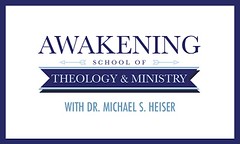Around the first century BC, historians began using the term ‘Osiris-Dionysus’ to commonly refer to dying-and-resurrecting deities, often part-human and born of ‘virgins’ that were worshipped in the years before the emergence of Jesus Christ. In the 5th century BC, Herodotus spoke in particular of the syncretic relationship between Osiris and Dionysus, the thirteenth god of the Greeks. By adding Dionysus to what we have already written about Osiris and Apollo, one can imagine a kind of demonic trinity—a single spirit represented in three manifestations, each of which illustrate a different side of the entity’s makeup. While as Osiris, this spirit is the god of death and the underworld, and as Apollo he is an oracular sun deity and destroyer demon, as Dionysus he is superficially depicted as the inventor of wine, abandon, and revelry, a description that seems inadequate in that it refers only to the basic elements of intoxication and enthusiasm, which was used of the Bacchae (the female participants of the Dionystic mysteries; also known as Maenads and Bacchantes) in their rituals to experience Dionysus, the intoxicating god of unbridled human desire.
Read the complete article here.










No comments:
Post a Comment